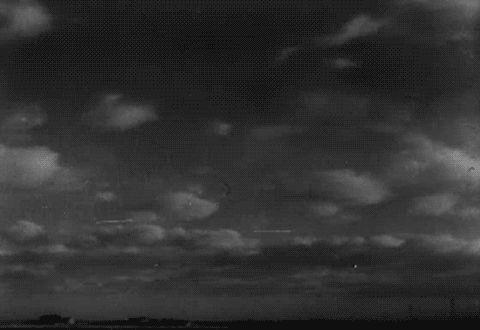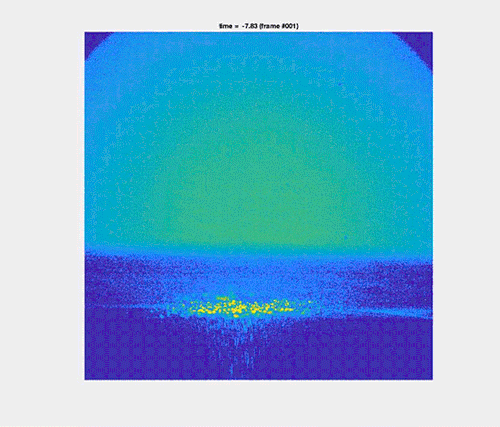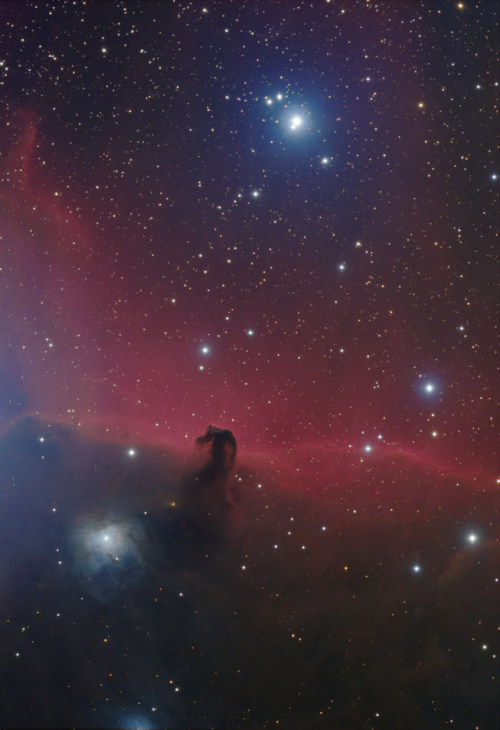Le Tempestaire (Jean Epstein, 1947)

Le Tempestaire (Jean Epstein, 1947)
More Posts from Sidusglacies and Others

“One of the most actively changing areas on Mars are the steep edges of the North Polar layered deposits. This image from NASA’s Mars Reconnaissance Orbiter (MRO) shows many new ice blocks compared to an earlier image in December 2006. An animation shows one example, where a section of ice cliff collapsed. The older image (acquired in bin-2 mode) is not as sharp as the newer one.” Credit - nasa.gov


A spiral in the Air Pump by Hubble Space Telescope / ESA
Huge news! Astronomers using the Hubble space telescope have discovered water in the atmosphere of an exoplanet in its star’s habitable zone. If confirmed, it will be the first time we’ve detected water—a critical ingredient for life as we know it—on an exoplanet. The water was detected as vapour in the atmosphere, but the temperature of the planet means it could sustain liquid water on its surface, if it’s rocky.
The planet is called K2-18b, and it’s about 110 light years away. The planet is much different than Earth. It’s a Super-Earth, and it’s twice as large as Earth, and about 8 times as massive. K2-18b is orbiting a red dwarf star, and it was first discovered in 2015 by the Kepler Space Telescope.
Dr. Angelos Tsiaras (UCL Centre for Space Exochemistry Data, CSED), said: “Finding water on a potentially habitable world other than Earth is incredibly exciting. K2-18b is not ‘Earth 2.0’ as it is significantly heavier and has a different atmospheric composition. However, it brings us closer to answering the fundamental question: Is the Earth unique?”
The team behind the discovery developed algorithms and ran archived Hubble data from 2016 and 2017 through them. They analyzed starlight from the red dwarf star as it passed through the exoplanet’s atmosphere. They discovered the molecular signature of water, as well as hydrogen and helium.
This discovery needs follow-up observations to confirm it. We also need better telescopes to study its atmosphere in greater detail, and the atmospheres of other exoplanets. Two telescopes on the horizon will tackle that job. The James Webb Space Telescope will have the powerful capability to examine the atmospheres of exoplanets, which is really the next step in understanding all of the exoplanets found by Kepler, and which will be found by TESS.
The ESA’s ARIEL (Atmospheric Remote-sensing Infrared Exoplanet Large-survey) mission will launch in 2028 and will study the atmospheres of about 1000 exoplanets in detail. ARIEL, along with the JWST, will give us a much better understanding of K2-12b and exoplanets like it.
You know what? It’s really like that sometimes.

tomorrow's schedule
7:30 am-8 am: wake up
8-8:30 am: drink a bowl of water with a spoon like soup
8:30 am - 4:00 pm: bring bronze age petroglyphs to life with my powers
4:00 pm-: haven't figured out this part yet

For more than a century, scientists have been fascinated by the jet that forms after a drop impacts a liquid. In this study, researchers tracked fluorescent particles in the fluid to understand the velocity and acceleration of flow inside the jet. (Image and research credit: C. van Rijn et al.; via APS Physics; submitted by Kam-Yung Soh)

-
 gullfiskencxx reblogged this · 3 months ago
gullfiskencxx reblogged this · 3 months ago -
 gullfiskencxx liked this · 3 months ago
gullfiskencxx liked this · 3 months ago -
 6feb9 reblogged this · 3 months ago
6feb9 reblogged this · 3 months ago -
 unlisted404606 liked this · 3 months ago
unlisted404606 liked this · 3 months ago -
 mermaidvampire liked this · 3 months ago
mermaidvampire liked this · 3 months ago -
 nerdyqueerr liked this · 3 months ago
nerdyqueerr liked this · 3 months ago -
 this-doesnt-endd liked this · 3 months ago
this-doesnt-endd liked this · 3 months ago -
 lesbianjudasiscariot reblogged this · 3 months ago
lesbianjudasiscariot reblogged this · 3 months ago -
 m-as-tu-vu liked this · 3 months ago
m-as-tu-vu liked this · 3 months ago -
 egg-bro liked this · 4 months ago
egg-bro liked this · 4 months ago -
 but-i-hear-you-anyway reblogged this · 4 months ago
but-i-hear-you-anyway reblogged this · 4 months ago -
 rottingbvnnyheart liked this · 4 months ago
rottingbvnnyheart liked this · 4 months ago -
 midnights-wish reblogged this · 4 months ago
midnights-wish reblogged this · 4 months ago -
 innocent-but-guilty liked this · 4 months ago
innocent-but-guilty liked this · 4 months ago -
 come-back-to-yourself reblogged this · 4 months ago
come-back-to-yourself reblogged this · 4 months ago -
 all-things-sydney liked this · 4 months ago
all-things-sydney liked this · 4 months ago -
 glitchbubbles reblogged this · 4 months ago
glitchbubbles reblogged this · 4 months ago -
 viveclobster reblogged this · 4 months ago
viveclobster reblogged this · 4 months ago -
 outoftimesblog liked this · 4 months ago
outoftimesblog liked this · 4 months ago -
 manitowocjohndoe reblogged this · 4 months ago
manitowocjohndoe reblogged this · 4 months ago -
 tenpercentsugar reblogged this · 4 months ago
tenpercentsugar reblogged this · 4 months ago -
 lesbianjudasiscariot liked this · 4 months ago
lesbianjudasiscariot liked this · 4 months ago -
 prairiedeath reblogged this · 4 months ago
prairiedeath reblogged this · 4 months ago -
 brujitaa reblogged this · 4 months ago
brujitaa reblogged this · 4 months ago -
 brujitaa liked this · 4 months ago
brujitaa liked this · 4 months ago -
 rottininmabed liked this · 4 months ago
rottininmabed liked this · 4 months ago -
 02void liked this · 4 months ago
02void liked this · 4 months ago -
 farmwitch liked this · 4 months ago
farmwitch liked this · 4 months ago -
 dios-de-papel reblogged this · 4 months ago
dios-de-papel reblogged this · 4 months ago -
 thefinalcrownofthorns liked this · 4 months ago
thefinalcrownofthorns liked this · 4 months ago -
 a-quietdream liked this · 4 months ago
a-quietdream liked this · 4 months ago -
 heyitiswilliam liked this · 4 months ago
heyitiswilliam liked this · 4 months ago -
 weareall1988 liked this · 4 months ago
weareall1988 liked this · 4 months ago -
 r0ttenpetals liked this · 4 months ago
r0ttenpetals liked this · 4 months ago -
 felinarealista reblogged this · 4 months ago
felinarealista reblogged this · 4 months ago -
 drippyrags liked this · 4 months ago
drippyrags liked this · 4 months ago -
 entreparentesisocho reblogged this · 4 months ago
entreparentesisocho reblogged this · 4 months ago -
 entreparentesisocho liked this · 4 months ago
entreparentesisocho liked this · 4 months ago -
 da-sonickm reblogged this · 4 months ago
da-sonickm reblogged this · 4 months ago -
 pancit0-tostado liked this · 4 months ago
pancit0-tostado liked this · 4 months ago -
 wir-0 reblogged this · 4 months ago
wir-0 reblogged this · 4 months ago -
 wir-0 liked this · 4 months ago
wir-0 liked this · 4 months ago -
 micorazon-uncenicero reblogged this · 4 months ago
micorazon-uncenicero reblogged this · 4 months ago -
 jedailylife1 liked this · 4 months ago
jedailylife1 liked this · 4 months ago


